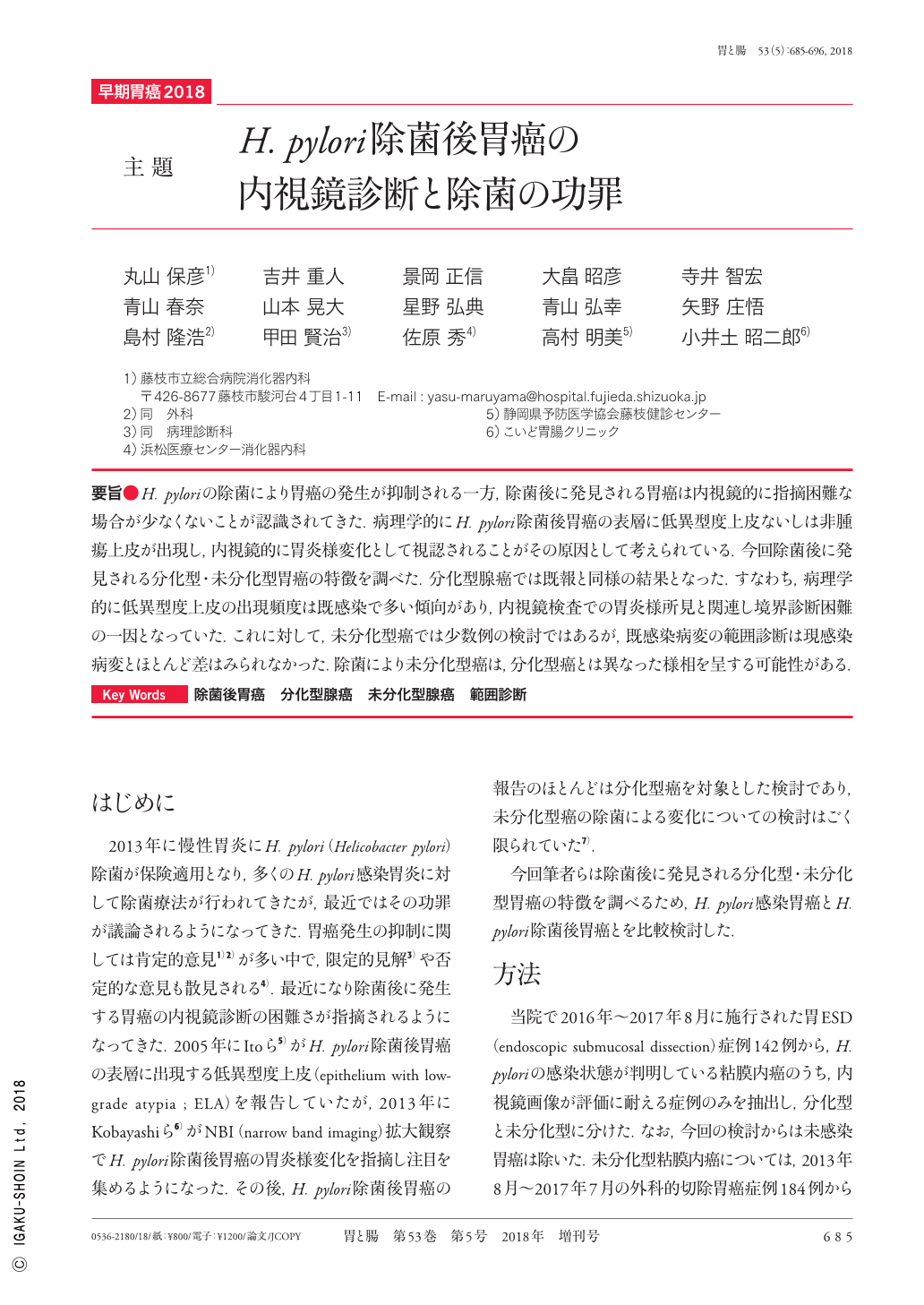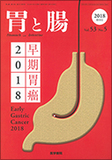Japanese
English
- 有料閲覧
- Abstract 文献概要
- 1ページ目 Look Inside
- 参考文献 Reference
- サイト内被引用 Cited by
要旨●H. pyloriの除菌により胃癌の発生が抑制される一方,除菌後に発見される胃癌は内視鏡的に指摘困難な場合が少なくないことが認識されてきた.病理学的にH. pylori除菌後胃癌の表層に低異型度上皮ないしは非腫瘍上皮が出現し,内視鏡的に胃炎様変化として視認されることがその原因として考えられている.今回除菌後に発見される分化型・未分化型胃癌の特徴を調べた.分化型腺癌では既報と同様の結果となった.すなわち,病理学的に低異型度上皮の出現頻度は既感染で多い傾向があり,内視鏡検査での胃炎様所見と関連し境界診断困難の一因となっていた.これに対して,未分化型癌では少数例の検討ではあるが,既感染病変の範囲診断は現感染病変とほとんど差はみられなかった.除菌により未分化型癌は,分化型癌とは異なった様相を呈する可能性がある.
Despite the suppression of gastric cancer by eradication of Helicobacter pylori, it is observed that the endoscopic diagnosis of gastric cancer detected after this eradication is difficult. ELA(epithelium with low-grade atypia)or non-neoplastic epithelium observed at the superficial layer of cancer is considered to play an important role in this diagnosis. We examined the characteristics of well-to-moderately and poorly differentiated gastric cancers detected after eradication. Our results based on the differentiation type are similar to those previously reported:ELA appears more frequently in cancers after eradication than in current infection and related with gastritis-like appearance, which becomes one of the reasons for diagnostic difficulties. On the other hand, there is little influence of endoscopic diagnosis on the demarcation line of poorly differentiated gastric cancer. Influences of the eradication might differ between well-to-moderately and poorly differentiated gastric cancers.

Copyright © 2018, Igaku-Shoin Ltd. All rights reserved.


